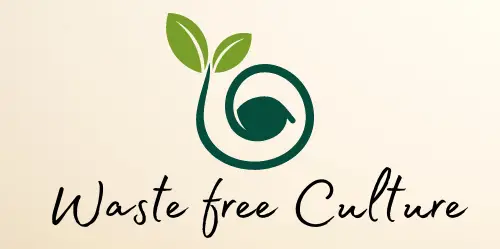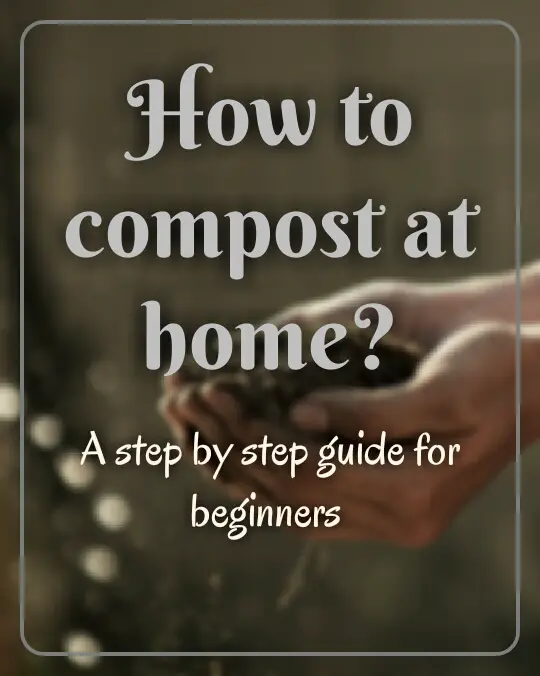Composting is a process of decomposing the organic matter and its end product is called the compost. Here, we’re doing nothing but speeding up the natural process of decaying which takes a long time to do on its own. Some people have a misconception that composting at home may stink or attract insects. But, it’s wrong.
We can produce the odourless and pest free compost if it is done in the right manner. At first, it seems to be a daunting task, but later you’ll get used to it as your daily chores since it takes no extra time as you think. If you have a garden or a backyard, it is really cool to compost there. But if you don’t have one composting at home will be your choice. Yes, it’s possible. So are you ready to compost at home?
DISCLOSURE: This post may contain affiliate links, meaning I get a commission if you decide to make a purchase through my links, at no additional cost to you.
Table of Contents
Requirements for composting:
You’ll need the following in order to make the compost.
- Carbon (Browns- dry leaves, wood fragments, paper etc)
- Nitrogen (Greens- fruit and vegetable scraps, green leaves etc)
- Water
- Oxygen [Note: All the 4 should be in the right proportion in order to get the active compost]
- A compost bin (Buy from the local store or you can just use an old bucket/ container with a lid)
How to compost?
Step 1:
Start with a brown heap (made of dry leaves, sawdust) in the Compost Bin. You can place this at your balcony or terrace if you have one (This is because it works efficiently in natural light and weather) and if you don’t have one just place it under the sink at your kitchen
Step 2:
Add the greens such as fruits and vegetable scraps, coffee grounds to it.
Note: The ratio of Browns and Greens should be 3:1
Step 3:
Sprinkle with water and don’t overdo it or else it’ll rot them instead of turning it into the compost but if you find that the heap is too dry, add a little amount of water.
Step 4:
Add a little amount of soil to speed up the process as it’ll boost the microbes to break down the pile easily.
Step 5:
Turn the pile occasionally (once a week) in order to aerate the pile.
Step 6:
The pile should be from 3 to 4 inches but if you have more space left in the composter, repeat the process by adding browns and greens alternatively and sprinkle it with water.
Step 7:
Close it in order to avoid the odour and other insects.
Step 8:
Your compost is ready to use.
Note: It really takes from few weeks to months to decompose completely. The ideal compost should be black or dark brown in colour which looks just like a healthy soil.
If you’ve extra greens from the kitchen, you can store it in the freezer by placing them in the composting bag or in any old plastic container for composting it later.
Types of composting at home:
Above, I’ve given the general idea on how to compost. But there are different types from which we can opt for the one which is reliable for us.
- Aerobic composting
- Anaerobic composting
- Vermicomposting
Aerobic composting:
Aerobic composting will decompose the substance in the presence of air. The steps which I’ve described above is the aerobic composting since we’re stirring it occasionally to feed some oxygen to the heap.
Anaerobic composting:
This kind of composting at home helps to decompose the matter in the absence of air (i.e., Here you don’t need the oxygen) using micro-organisms. As a result, it produces biogas called methane, a by-product which can be used as a fuel.
Since there is no oxygen, it gives an unpleasant smell and takes more time to decompose when compared to the aerobic composting method. The advantage of this method is that you can add meat and dairy products which cannot be used in the aerobic composting technique. You can find the anaerobic composter online.
Vermicomposting:
Here in the vermicomposting, you’ll add earthworms to your compost. Make sure to provide oxygen to the worms by creating some holes at the top of the bin to keep them alive. You can do this kind of compost both indoors and outdoors. But, make sure to keep it in a shady place as the worms tend to die at the extreme temperature.
General tips for the good compost:
- For a healthy, odourless and pest free compost, they should be in the right balance. Usually, the carbon should be more than nitrogen. So, the carbon and the nitrogen ratio should be like (25-30):1 [Some say 3: 1 but the thing is carbon should be higher in content]
- To speed up the process, chop the ingredients finely before leading them to the composter.
Benefits of composting:
- We can reduce the overall landfills in the world by 46% if everyone starts doing it as 30% of trash comes from our home can be composted according to EPA (Environmental Protection Act).
- It prevents from emitting methane gas directly to the atmosphere which is a greenhouse gas which plays a major role in global warming. For your note, methane gas is 84 times more powerful than co2 (carbon dioxide).
- We can add nutrients to the soil in a harmless and natural way. By composting at home we can get back to our olden days where food is entirely free from chemicals which are used in the artificial fertilizers and the pesticides hence it is known as ”black gold” to the farmers.
- Feeding the compost makes your soil more fertile.
- It helps to retain the nutrients and water in the soil.
- Compost also acts as a natural pesticide and thus the plants won’t be affected by diseases easily.
Browns:
So, what are the browns? They’re rich in carbon.
- Newspaper and all other non-glossy paper (shredded)
- Nutshells
- Straw/hay (shredded)
- Cardboard (chopped)
- Sawdust
- Wood chips
- Dry leaves
- Paper towel
- Coffee filters
- Dryer lint (not synthetic)
- Latex balloons
- Contents of vacuum cleaner
- Wood ash
- Coco peat
Greens:
The greens are rich in nitrogen. Following are some of the greens you can add them in your compost pile.
- Fruit and vegetable scraps (chopped)
- Eggshells (crushed)
- Grass clippings
- Animal faeces (horse and chicken)
- Weeds
- Cut flowers
- Coffee grounds
- Tea leaves and bags (not made of synthetic)
- Wool / Cotton fibres (only natural)
- Fresh leaves
- Seaweed
- Hair of both humans and animals
- Nails (free from nail polish)
- Toothpicks
- Bamboo skewers
Things to avoid:
- Dairy products
- Bones, meat and fish (may attract animals)
- Plants (diseased or treated with chemicals like pesticides)
- Bread
- Coal ash
- Weed seeds
- Walnut leaves, seeds and twigs
- Glossy paper
- Harsh chemicals
- Citrus fruits
- Pineapple
- Onions and garlic
- Oils
- Gravy and fried items
- Human, cat and dog faeces (not only creates smell but also spread harmful bacteria and germs)
Tips to avoid the stinky compost pile
- Avoid the materials which I mentioned above. If you mistakenly added any of the above things, don’t worry just try to remove it. If you couldn’t, cover it with more browns.
- Make sure not to make the pile too wet. If you find it soggy add some brown materials to it as the browns help to control the moisture and odour from the composting bin.
- Stir the compost pile occasionally in order to aerate the pile (No oxygen→stinky pile).
What can you do with this compost?
- Use it in your garden as a natural fertilizer.
- If you don’t have plants or a garden, you can gift it to the people or community who have one.
- Donate it to the local farmers from whom you usually buy your fruits and vegetables as they are used to buy the compost for the cost so you can help them by providing it for free.
So how do you guys compost at your home? Share your thoughts on it.
You may also read:
Outdoor composting | types | dos & don’ts
Zero waste skincare routine for healthy glowing skin
Zero waste hair care routine – Minimalism
Get rid of dark circles – Natural & Zero waste way!
Homemade Moisturizers for dry skin in winter
DIY Lip Balm: Natural & Zero Waste
Orange peel powder – DIY, Skin & Hair Benefits
Rose petal powder – DIY, Benefits for skin and hair
Zero waste school supplies and tips
Sustainable fashion Guide | Top 9 Ethical clothing brands
Zero waste Christmas – A sustainability guide
Zero waste valentine’s day ideas
10 easy Zero waste swaps you can make today
DIY Air Fresheners – Zero Waste & Homemade
Natural mosquito repellents that actually works!
Sustainable Alternatives to Tissues
How to use soap nuts for laundry? | 3 different ways
Bio enzyme-All purpose cleaner (DIY, FAQ & Zero Waste)
E-waste: Reuse, Repair, Recycle – towards zero waste
How landfills affect our environment?
What do you do with old plastic? | Zero waste living
Tips to turn waste into something useful at home
11 tips to conserve water at your home
5 Eco-Friendly Food Storage Containers & Cookware
Follow me in social media:



